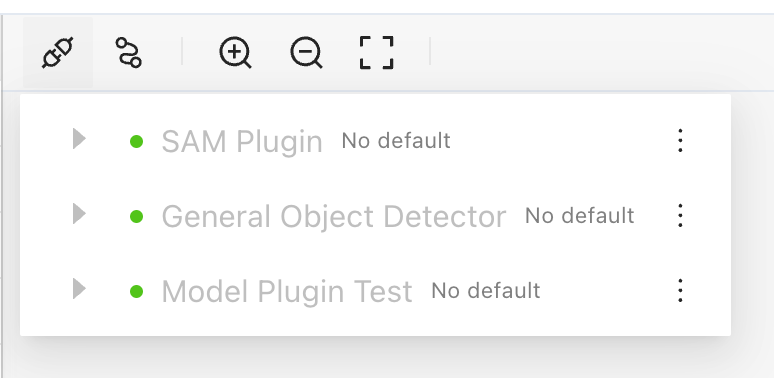Users can now change the class of an existing brush trace instance. Read more in our docs.
The in-editor plugin menu now features liveness indicators for listed plugins.

Hovering over brush instance object rows in the “Objects” panel now also causes the related brush instance to be highlighted.
While drawing using the Brush tool, after having created multiple closed loops in the same instance, undoing (Ctrl + Z / ⌘ + Z) will undo the creation of the latest closed loop rather than undoing the entire instance.
In image / video assets with brush traces, the performance of unhiding all annotations (Shift + H) has been dramatically improved.
While drawing with the Pen mode of the Brush tool, the performance of finalizing a loop has been improved, with the duration of the finalization being reduced, depending on image and region size, by between one third and one half.
In assets with a large number of brush trace annotations, the general performance and responsiveness of the platform has been improved significantly.
The speed at which an existing brush trace instance is highlighted when hovering over it with the mouse cursor has been significantly improved.
When clicking on a brush trace instance, the cursor will not immediately turn into the Pen tool, giving users the chance to right-click on the instance to open the context menu. Users can still make edits to existing instances by clicking on them and then clicking on either the Pen or Brush tools on the top toolbar.
When opening a task with a considerable number of brush traces, Ango Hub will wait to display the asset until the brush traces are loaded as well.
The code underlying all labeling operations, including label creation, editing, and saving, as well as parts of task and asset management, has been reviewed in its entirety and optimized, leading to potential performance and stability improvements across the platform.
Server-side code powering issue creation, stage history, sample projects, and storage integrations has been reviewed and optimized, leading to potential performance and stability improvements in those areas.